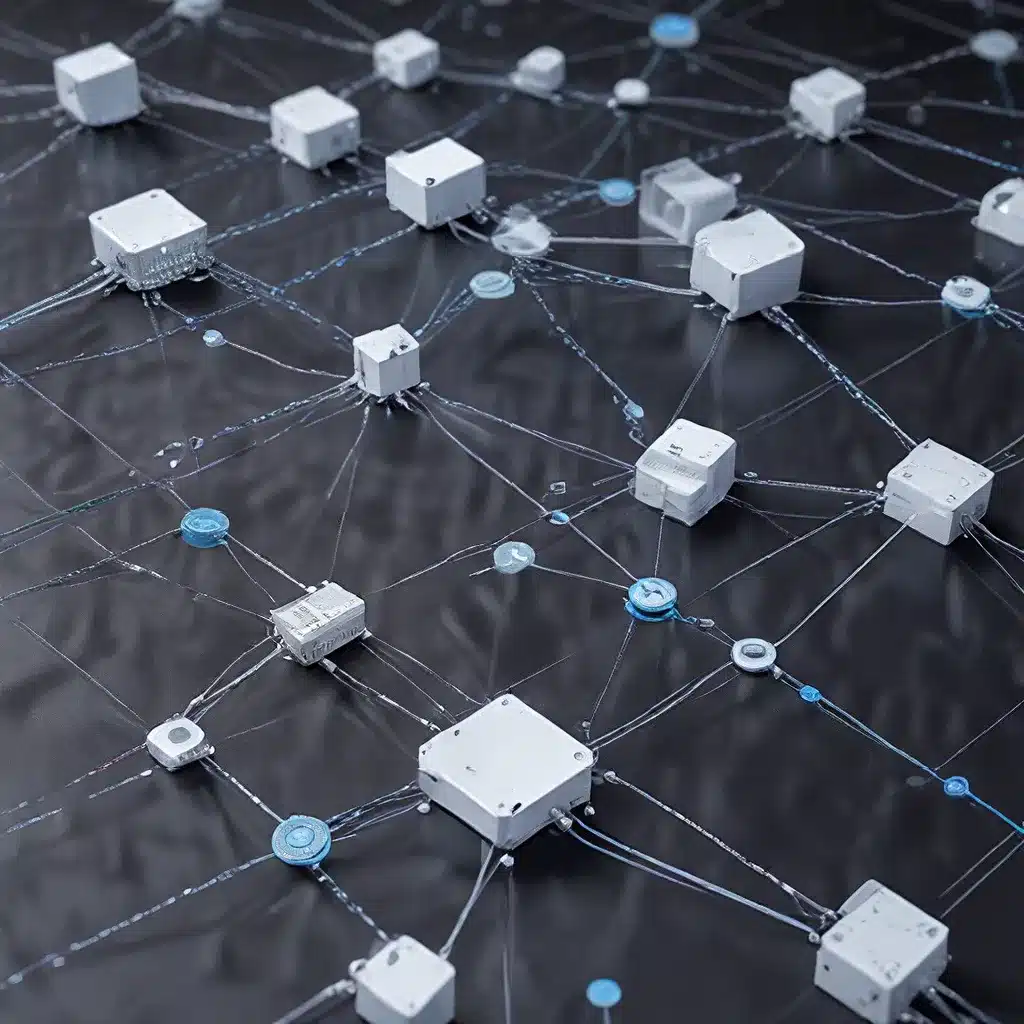
Resilient Sensor Networks: The Backbone of Robust IoT
The rise of the Internet of Things (IoT) has revolutionized the way we interact with our physical environment. At the heart of this transformation lies the sensor network – a critical infrastructure that enables the seamless collection, processing, and communication of data from the real world. As IoT applications become increasingly prevalent in safety-critical domains, such as robotics, industrial manufacturing, and power systems, the need for fault-tolerant and secure sensor network design has never been more pressing.
Sensor networks form one of the core components of cyber-physical systems (CPS), which integrate physical processes with computational elements. These systems are responsible for making decisions and providing valuable information by leveraging data captured through physical and virtual objects. However, faults and cyber-attacks have been shown to cause safety violations, potentially leading to system damage and endangering human lives. Consequently, designing robust and resilient sensor networks is a crucial challenge that must be addressed to ensure the reliability and safety of IoT systems.
Fault-Tolerant Sensor Network Architectures
One of the key strategies for building fault-tolerant sensor networks is to employ binary sensors with the ability to detect and report faults. By incorporating this capability, the sensor network can identify and isolate faulty nodes, ensuring that the overall system continues to operate correctly despite the presence of individual failures.
| Network Topology | Fault-Tolerance | Communication Overhead | Energy Efficiency |
|---|---|---|---|
| Centralized | Low | High | Low |
| Distributed | High | Medium | Medium |
| Hierarchical | Medium | Low | High |
When designing fault-tolerant sensor networks, engineers must consider various network topologies, each with its own advantages and trade-offs. Centralized architectures offer simplicity but are vulnerable to single points of failure, while distributed designs provide higher fault-tolerance at the cost of increased communication overhead. Hierarchical topologies, on the other hand, strike a balance between fault-tolerance and energy efficiency, making them a popular choice for many IoT applications.
Securing Sensor Networks Against Cyber Threats
Alongside fault-tolerance, security is another critical aspect of sensor network design for reliable IoT systems. Sensor networks are inherently vulnerable to a range of cyber-attacks, including eavesdropping, node compromise, and denial-of-service (DoS) attacks, which can compromise the integrity and availability of the system.
To address these security challenges, researchers and engineers have developed a variety of security protocols and encryption techniques tailored for sensor networks. Some of the commonly employed approaches include:
- Secure Key Management: Implementing robust key distribution and management mechanisms to ensure secure communication between sensor nodes.
- Intrusion Detection: Deploying anomaly-based or signature-based intrusion detection systems to identify and mitigate cyber threats.
- Lightweight Cryptography: Adopting specialized cryptographic algorithms that are computationally efficient for resource-constrained sensor nodes.
- Secure Routing: Designing secure routing protocols that can detect and isolate compromised nodes, preventing the spread of attacks.
By incorporating these security measures, sensor networks can be hardened against a wide range of cyber threats, ensuring the confidentiality, integrity, and availability of IoT systems.
Energy-Efficient Sensor Network Design
One of the key challenges in sensor network design is energy management. Sensor nodes are often battery-powered and deployed in remote or inaccessible locations, making it crucial to optimize their energy consumption to extend the network’s lifetime.
Several techniques have been developed to address this challenge:
- Energy-Efficient Hardware: Designing sensor nodes with low-power components, such as microcontrollers, radio transceivers, and sensors, to minimize energy consumption.
- Duty Cycling: Implementing sleep/wake-up schedules for sensor nodes, allowing them to conserve energy by turning off components when not in use.
- Data Aggregation: Consolidating data from multiple sensor nodes to reduce the amount of information that needs to be transmitted, thereby decreasing energy consumption.
- Renewable Energy Sources: Integrating sensor nodes with energy harvesting technologies, such as solar panels or vibration-based harvesters, to supplement or replace battery power.
By leveraging these energy-efficient strategies, sensor network designers can create IoT systems that operate reliably for extended periods, reducing maintenance costs and environmental impact.
Emerging Trends and Future Directions
As the IoT ecosystem continues to expand, the role of sensor networks in enabling reliable and secure applications becomes increasingly crucial. Several emerging trends and future directions are shaping the development of sensor network technologies:
- Edge Computing: The integration of edge computing capabilities within sensor networks, allowing for local data processing and decision-making, can enhance responsiveness and reduce the reliance on cloud infrastructure.
- Sensor Fusion: Combining data from multiple sensor modalities, such as visual, audio, and environmental sensors, can provide a more comprehensive understanding of the monitored environment, leading to enhanced context awareness and improved decision-making.
- Adaptive Sensing: Developing sensor networks with the ability to dynamically adjust their sampling rates, communication protocols, and energy management strategies based on changing environmental conditions or application requirements can optimize performance and resource utilization.
- Blockchain and Distributed Ledger: Leveraging blockchain and distributed ledger technologies can enhance the security and transparency of sensor network operations, enabling secure data sharing and tamper-proof record-keeping.
By embracing these advancements, sensor network designers can create resilient, efficient, and secure IoT systems that are better equipped to meet the demands of an increasingly connected world.
Conclusion
In the era of the Internet of Things, sensor networks have become the backbone of reliable and efficient IoT systems. Designing fault-tolerant and secure sensor networks is crucial for ensuring the safety and integrity of critical applications in domains such as robotics, industrial automation, and smart infrastructure. By incorporating strategies for fault-tolerance, security, and energy management, sensor network designers can create IoT systems that are resilient, responsive, and adaptable to the evolving technological landscape.
As the IoT ecosystem continues to expand, the role of sensor networks will only become more pivotal. By staying attuned to emerging trends and future directions, such as edge computing, sensor fusion, and blockchain integration, sensor network designers can unlock new possibilities for IoT applications and contribute to a more connected, secure, and sustainable future.